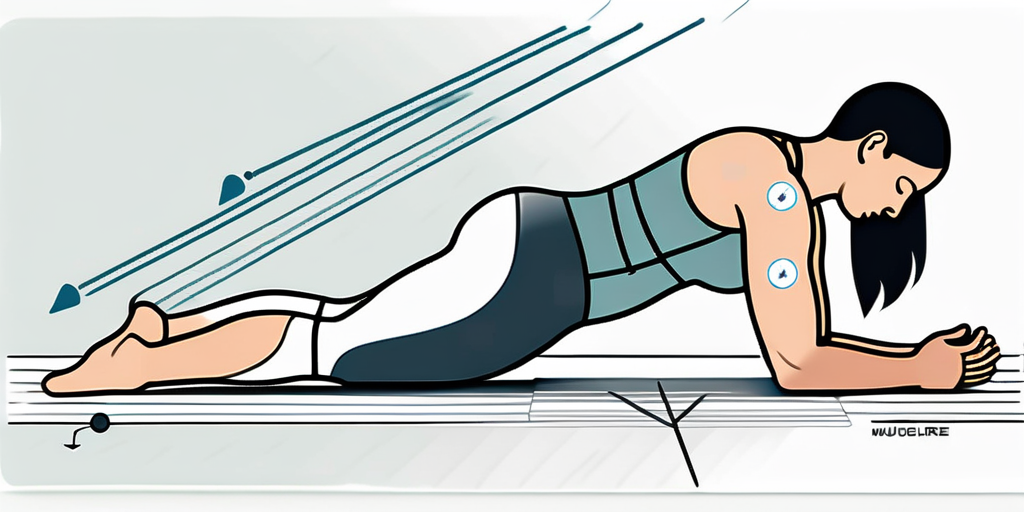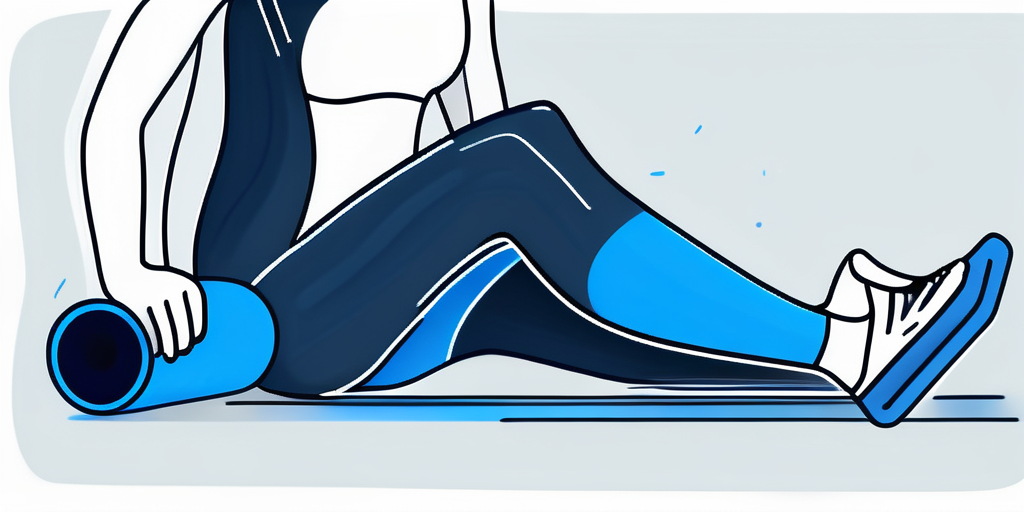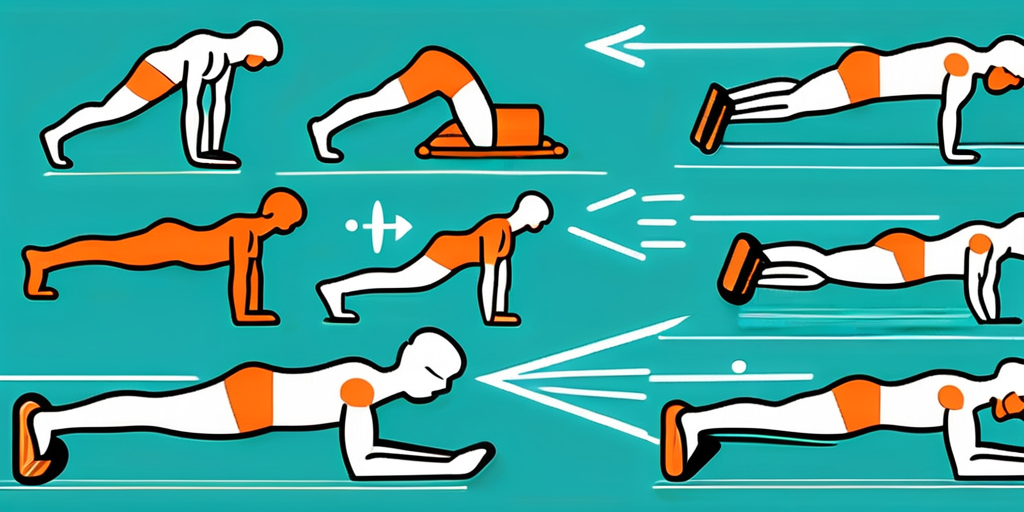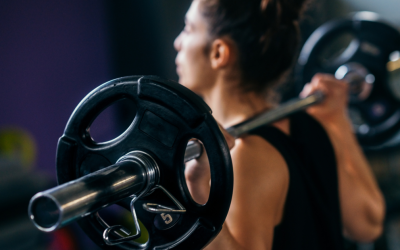Whether you’re an athlete, a fitness enthusiast, or simply someone who wants to improve muscle recovery, foam rolling can be a game-changer. This simple yet effective tool has gained immense popularity recently due to its ability to release myofascial and promote muscle recovery.
In this article, we will explore the benefits of foam rollers, critical techniques for practical use, specific exercises for different muscle groups, tips for incorporating it into your routine, common mistakes to avoid, and answer some frequently asked questions.
Understanding Myofascial Release and Its Benefits
Before diving into foam rolling, it’s essential to understand myofascial release and how it can benefit your muscles. Myofascial release is a technique that targets the fascia, a connective tissue that surrounds and supports your muscles.
Over time, the fascia can become tight or restricted, leading to pain, stiffness, and decreased mobility. Using foam rolling, you can apply pressure to the affected areas and release tension in the fascia, promoting improved blood circulation and enhanced muscle recovery.
One key benefit of myofascial release is its ability to relieve muscle soreness and tightness. After an intense workout, muscles can feel achy and stiff. Foam rolling helps alleviate these symptoms by breaking down muscle adhesions and knots, allowing them to relax and recover more efficiently.
The Role of Fascia in Muscle Recovery
Before we delve into the specifics of foam rolling, let’s discuss the role of fascia in muscle recovery. Fascia is a web-like structure that surrounds your muscles, providing support and allowing them to glide smoothly. When you exercise, your muscles undergo stress, which causes tiny tears in the muscle fibers. This is a normal part of the muscle-building process.
However, if the fascia becomes tight or restricted, it can impede recovery. Foam rolling helps by applying pressure to the fascia, breaking up adhesions, and promoting healthy blood flow. This, in turn, aids in muscle recovery and helps prevent future injuries.
Furthermore, fascia plays a crucial role in maintaining proper posture and movement. When the fascia is healthy and flexible, it allows your muscles to move freely and efficiently. However, if the fascia becomes tight or restricted, it can restrict your range of motion and lead to muscle imbalances. This can increase your risk of injury and hinder your athletic performance.
Incorporating myofascial release techniques like foam rolling into your fitness routine can help keep your fascia healthy and supple. Regular foam rolling sessions can help break up any adhesions or restrictions in the fascia, allowing your muscles to move more freely and improving overall athletic performance.
Foam Rolling Aids in Muscle Recovery
Now that we understand the benefits of myofascial release let’s explore how foam rolling aids muscle recovery. When using a foam roller, you give yourself a deep tissue massage. The pressure applied to your muscles helps release tension and increase blood flow, promoting oxygen and nutrient delivery to your muscles.

Additionally, foam rolling can help reduce muscle inflammation. After an intense workout, your muscles may be inflamed, leading to discomfort and delayed recovery. A foam roller stimulates the lymphatic system, which helps flush out toxins and reduce inflammation.
Foam rolling also helps increase the range of motion and flexibility. As you roll over your muscles, you release tightness and adhesions, allowing your muscles to move more freely. This can be particularly beneficial for athletes who need to maintain optimal flexibility for their sports or individuals who struggle with tight muscles.
The Science Behind Foam Rolling
While foam rolling may seem like a simple practice, there is scientific evidence to support its effectiveness. A study published in the Journal of Athletic Training found that foam rolling significantly improved range of motion and muscle performance while reducing muscle soreness after exercise.
Another study published in the Journal of Sports Rehabilitation found that foam rolling effectively increased flexibility and range of motion as part of a warm-up routine. This reinforces the idea that foam rolling benefits recovery and enhances athletic performance.
What Happens to Your Muscles During Foam Rolling?
But what exactly happens to your muscles when you foam roll? Let’s dive deeper into the science behind this self-myofascial release technique. When you apply pressure to your muscles using a foam roller, you activate the Golgi tendon organs. These sensory receptors are located in your tendons and are responsible for detecting changes in muscle tension.
The Role of Golgi Tendon Organs
When the Golgi tendon organs are stimulated, they send signals to the brain, which signals the muscles to relax. This relaxation response helps release the tightness and knots in the muscles, providing relief and promoting recovery.
Mechanotransduction: How Foam Rolling Triggers Muscle Repair
Furthermore, foam rolling triggers a process called mechanotransduction. This process involves the conversion of mechanical signals, such as pressure and stretching, into biochemical signals within your muscles. These biochemical signals then initiate a cascade of cellular responses, including the production of growth factors and the activation of satellite cells.
The Importance of Growth Factors and Satellite Cells
Growth factors play a crucial role in muscle repair and regeneration. They stimulate the synthesis of new proteins essential for muscle growth and recovery. Satellite cells, on the other hand, are responsible for muscle regeneration. They fuse with existing muscle fibers when activated, helping repair damage and promoting muscle growth.
Conclusion: The Benefits of Foam Rolling
So, the next time you reach for your foam roller, remember that you are not just giving yourself a massage. You are engaging in a scientifically backed practice that promotes muscle recovery, reduces inflammation, and enhances overall athletic performance.
Key Techniques for Effective Foam Rolling
Now that you understand the benefits of foam rollers, let’s explore some essential techniques to ensure you get the most out of your sessions.
First and foremost, it is essential to start slowly and gradually increase the intensity. If you’re new to foam rolling or have particularly tight muscles, begin with lighter pressure and shorter rolling sessions. As your muscles adapt and become more flexible, you can gradually increase the pressure and duration of your foam roller sessions.
Focusing on the areas that need attention is essential when using a foam roller. You can target specific muscle groups by positioning yourself on the foam roller accordingly. For example, if you’re targeting your calves, place the foam roller under them and use your body weight to control the pressure.
Tips for Safe Foam Rolling
While foam rolling can be incredibly beneficial, practicing safe techniques to avoid injury is essential. Here are some tips to keep in mind:
- Do not roll directly over joints or bones, which can cause discomfort or injury.
- Avoid rolling on an inflamed or injured muscle. Give it time to heal before incorporating foam rolling into your routine.
- Listen to your body and adjust the pressure accordingly. If a particular area feels too painful or uncomfortable, reduce the pressure or try a different technique.
- Remember to breathe deeply and relax during your foam roller sessions. Tension or shallow breathing can inhibit the release of tightness in the muscles.
Foam Roller Exercises for Different Muscle Groups
One of the great things about foam rolling is its versatility. It can be used to target various muscle groups throughout your body. Let’s explore some foam rolling exercises for different muscle groups:
Upper Back and Shoulders
Place the foam roller horizontally on the ground to target your upper back and shoulders. Sit on the foam roller and slowly roll back and forth, focusing on tight or tender areas. You can also extend your arms overhead to deepen the stretch.
Quadriceps and IT Band
To target your quadriceps and IT band, lie face down with the foam roller under your thighs. Use your arms and core strength to control the pressure as you roll up and down the front of your thighs.
Hamstrings and Glutes
Sit on the foam roller with one leg extended to target your hamstrings and glutes. Cross the opposite ankle over the knee and roll back and forth, focusing on the tight areas.
Tips for Incorporating Foam Rollers into Your Routine
Now that you’re familiar with foam rolling exercises for different muscle groups, let’s discuss how to incorporate them effectively into your routine.
Firstly, consistency is key. To experience the full benefits, aim to foam roll at least a few times per week, if not daily. This can be done before or after your workouts or even on rest days.
You can also combine foam rolling with other recovery techniques, such as stretching or icing. Foam rolling before a workout can prepare your muscles for exercise while using foam rollers after a workout can aid in recovery and reduce muscle soreness.
Creating a Personalized Foam Roller Routine
Another effective way to incorporate foam rollers into your routine is to create a personalized foam rolling routine based on your specific needs. Identify the muscle groups that tend to be tight or sore and prioritize those areas during your foam roll sessions.
Remember to start slowly and listen to your body. Gradually increase the pressure and duration as your muscles become accustomed to the foam roller.
Common Mistakes to Avoid When Using Foam Rollers
While foam rolling is simple, people often make common mistakes. By avoiding these mistakes, you can maximize the benefits and reduce the risk of injury.

Mistake #1: Rolling Too Fast
One common mistake is rolling too fast. It’s important to take your time and work slowly through each muscle group. Rolling too quickly can prevent adequate pressure from being applied to the muscles.
Mistake #2: Spending too Little Time on Each Area
Another mistake is spending too little time on each area. To effectively release tension and tightness, spend at least 30 seconds to a minute on each muscle group. This allows enough time for the muscles to relax and release.
Frequently Asked Questions About Foam Rolling and Muscle Recovery
As foam rollers continue to gain popularity, it’s natural to question their effectiveness and how it can benefit your muscle recovery. Let’s address some frequently asked questions:

Q: How often should I foam roll?
A: Ideally, you should foam roll at least a few times a week, if not daily, to experience the benefits. It can be done before or after workouts or even on rest days.
Q: Can rolling replace stretching?
A: While foam rollers can complement stretching, it is not a complete replacement. Stretching helps lengthen the muscles, while foam rolling focuses on breaking up adhesions and releasing tension. Incorporating both techniques can provide optimal results.
Q: Can foam rollers help with injury prevention?
A: Yes, foam rolling can be an effective tool for injury prevention. By releasing muscle tension and improving flexibility, foam rollers can help reduce the risk of muscle strains and other injuries.
Q: How long should my rolling sessions be?
A: Foam rolling sessions can vary depending on your needs and available time. Aim for at least 10-15 minutes per session as a general guideline. However, if you have specific areas that require more attention, you can spend additional time on those areas.
Q: Can I foam roll if I have an existing injury?
A: It’s crucial to consult with a healthcare professional if you have an existing injury before incorporating foam rolling into your routine. While foam rolling can be beneficial, some injuries may require a modified approach or additional treatments.
Incorporating foam rolling into your routine can unlock the door to improved muscle recovery and overall performance. Whether you’re an athlete or simply want to enhance your well-being, foam rolling offers a simple and effective solution. Remember to start slowly, focus on the areas that need attention, and practice safe techniques. With consistency and patience, foam rolling can become an integral part of your fitness journey. So, grab a foam roller and roll your way to better muscle recovery today!



